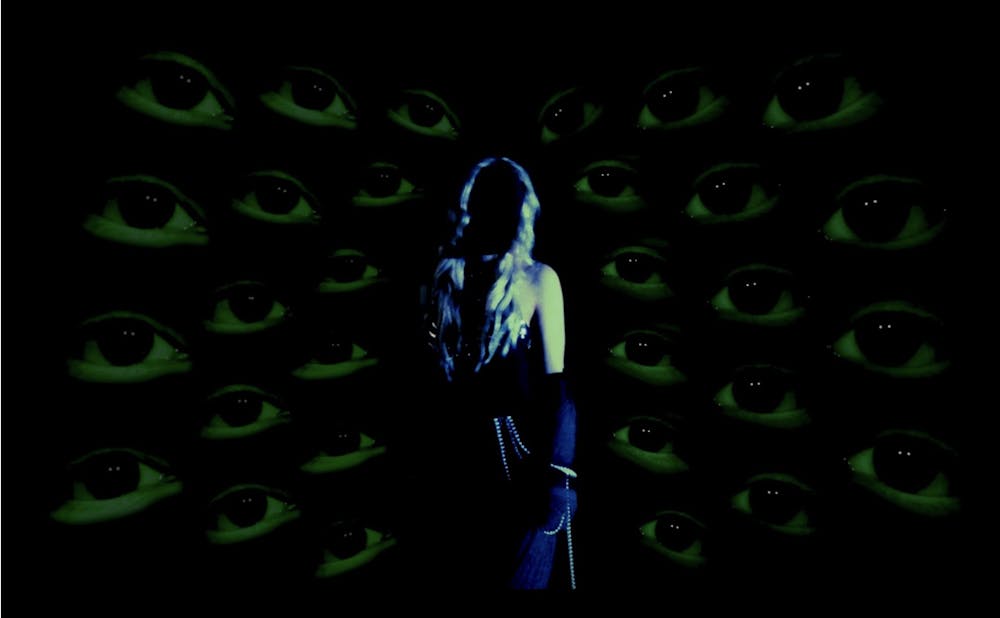PHOENIX — When you walk into Terror Trader, Arizona’s only year-round horror marketplace, you can expect to see art that walks the line between peculiar and unsettling. However, something that’s even more fascinating that you’ll learn inside the store, perhaps while looking at a wet specimen, is that the people behind these oddities are mostly women.
Terror, fear and unfamiliarity are not typically emotions people welcome happily, let alone want to actualize. However, local female artists are using their surreal, horror-esque art to empower femininity.
Artists like Meghan O’Connell, a local horror illustrator, are using their art to redefine what is beautiful.
O’Connell makes horror-inspired fashion illustrations that stem from her own experiences and anxieties. Often she includes horror movie characters reimagined as beautiful, stylish women.
O’Connell believes that there is a certain vulnerability to making this kind of art because it allows her to express her emotions and beautify the darkness.
Some of her work suggests that maybe there’s such a feminine draw to horror because of the dark emotions and gorey realities the art suggests.
“Even with things like menstruation,” O’Connell said. “We are exposed to blood and things of that sort at such a young age, maybe that has something to do with it.”
O’Connell may not know the exact reason for the female horror-gaze, but can infer the connections women may make rather than men.
“At shows, there are pieces that women gravitate to, meanwhile, they give men the creeps,” O’Connell said. “[There’s] a piece that symbolizes that when people reveal who they are, to believe them.”
“Reveal”, one of O’Connell’s pieces, depicts a glamorous woman crouched over, while monstrous arms and tentacles gape out of parts of her body.
Alice Kovaleva, another local female horror artist, is also using her art to express her own femininity.
“I think women see the world way differently than men and it’s important to have different visions in the industry,” Kovaleva said.
Kovaleva’s art commonly depicts naturalistic elements in a dark light, and she often finds herself including herself into these pieces.
“Whenever I try to draw people they always turn out to look like me,” Kovaleva said. “I like to relate to the characters in my art and use them to express my feelings.”
Kovaleva uses her art to turn those feelings into reality, and thus finding beauty in the darkness. She finds that making horror art is the best way for her to address her deeply intense emotions, and find confidence through those creations.
“I always thought that there is something beautiful in scary things and if a person isn’t afraid of the horror, it makes them powerful,” Kovaleva said.
Local filmmaker Livi Darconte can attest to this, recounting how actualizing one of her nightmares is what made it disappear.
Darconte’s film “Parable of the Pomegranate” is an interpretation of her nightmare that stemmed from a fear of abandonment and heartbreak. Darconte decided to turn the dream into a reality.
“The film is about a repeating nightmare of a faceless woman I had for a long time,” Darconte said. “Once the film was finished, I never had that nightmare again.”
Darconte said that her surreal, experimental style of film evokes a certain stomach-turning feeling in people, perhaps not only because of the disturbing visuals.
“My friend says the reason why people relate my work to horror is because I extract emotions that make people uncomfortable,” Darconte said.
Darconte suggests that by releasing these horrific feelings into reality in their most gruesome forms is what actually makes it easier to move on. She said that these feelings may be easier for women to confront because it is familiar to them.
“Women are familiar with fear,” Darconte said. “Walking alone at night, always watching your back, or maybe there’s a creepy guy at the gas station.”
Darconte joins Kovaleva and O’Connell in an understanding that men don’t perceive emotions the same way that women do. They suggest that maybe that’s why there is a certain feminine draw to horror-related work.
“A lot of my best feedback on my work is actually from my male friends,” Darconte said. She said that maybe it's because they are able to see deep dark emotions come to life that they don't typically confront.
Darconte, Kovaleva and O’Connell can all attest to the freeing nature of their work, and how by putting those nightmarish, odd and gruesome thoughts and feelings into real life, they have been empowered.
“This art has made me a stronger person and a much stronger woman,” Darconte said. “I feel like I finally have a voice and confidence, which I got through my passion.”

